Last week, President Donald Trump reiterated his call for the Fed to cut interest rates:
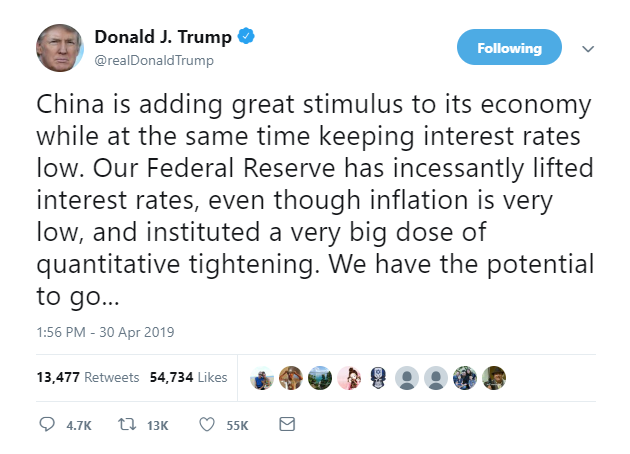
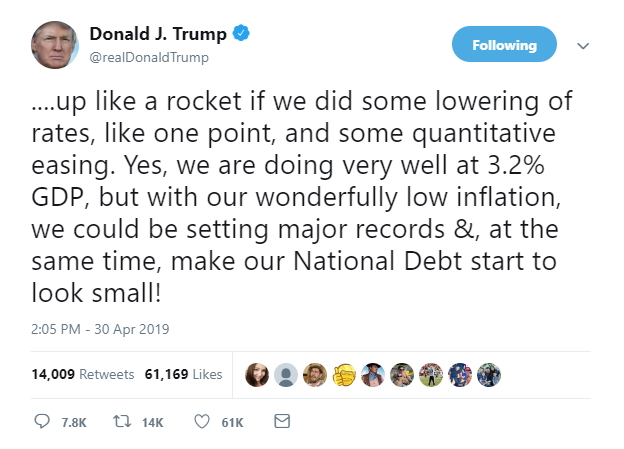
President Trump is technically correct in saying that the economy (or, more accurately, the stock market) would “go up like a rocket” if the Fed cut rates by 1%, but only because doing that would supercharge the dangerous bubblesthat are driving our growth. If Trump theoretically got his way and the Fed cut rates by 1% (assuming it was a preemptive move rather than a reaction to a sharp economic slowdown), the stock market would most likely launch a powerful 1999-style melt-up, which would ultimately culminate in an equally devastating bust like we experienced in the early-2000s.
Here’s what led to the 1999 market melt-up: the Asian financial crisis, the Russian debt default, and the resulting failure of U.S. hedge fund Long Term Capital Management roiled the financial markets in 1997 and 1998 and led to concerns about a more extensive contagion. Even though U.S. economic data was still very strong, Fed Chair Alan Greenspan cut the Fed Funds rate three times in rapid succession in late-1998 (25 basis points each time for a total cut of .75%) in an effort to shore up confidence and help cushion the U.S. economy.
Prudential Securities analyst Michelle Laughlin captured the thinking behind the rate hikes at the time:
This tells me the Fed is correctly looking forward, looking at the risk of consumers pulling back in spending because stocks have fallen. They’re working in anticipation of that to make sure the U.S. economy does not slip into recession. I’m very encouraged by the Fed’s action.
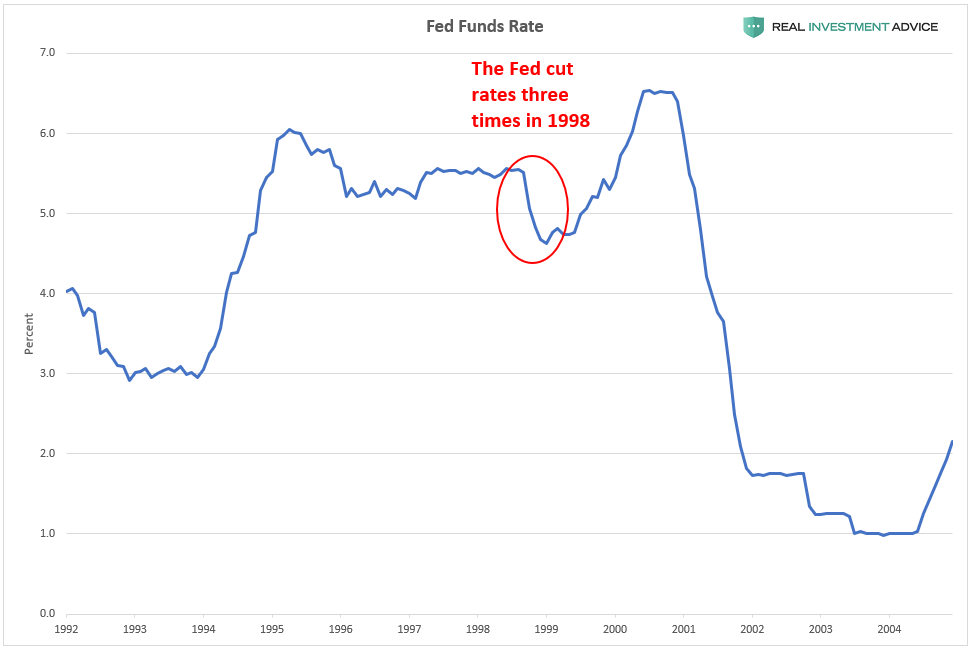
The Fed’s aggressive preemptive interest rate cuts in 1998 were like pouring gasoline onto a fire: the Nasdaq Composite Index exploded 280% in the next year-and-half as the dot-com bubble went into overdrive. Of course, the dot-com bubble peaked in March 2000 and the Nasdaq proceeded to crash 80% over the next three years. The Nasdaq’s bear market erased the entire post-1998 gain and then some.
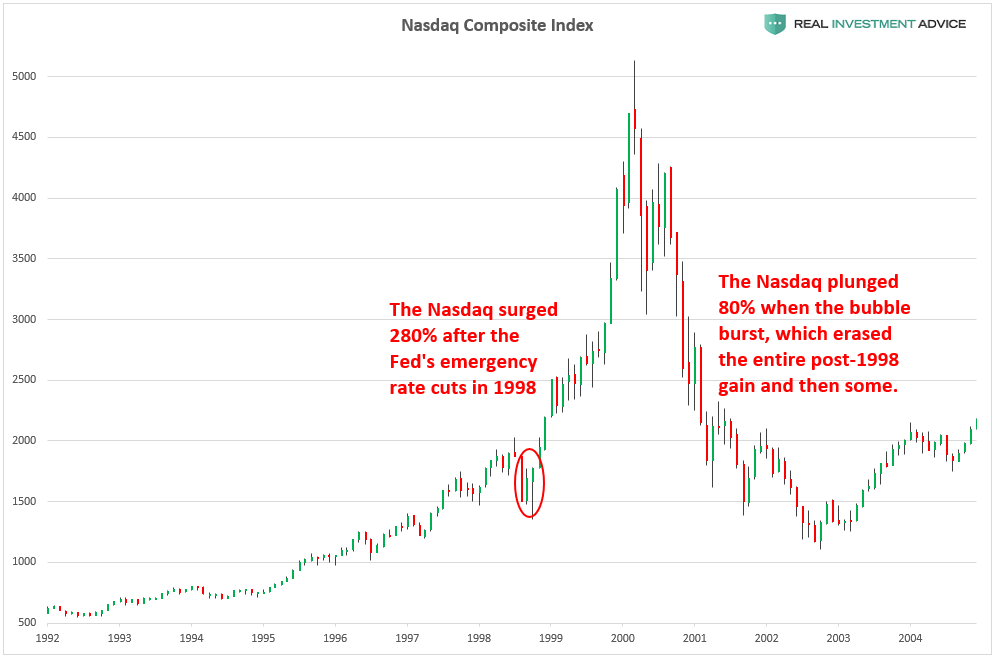
There are enough parallels between today’s market and the late-1990s market that if Trump got his way and the Fed slashed rates aggressively, the U.S. stock market could pull another ’99. Though the S&P 500 is up 300% from its 2009 lows, it has basically stalled since the start of 2018. The market pulled back approximately 20% in late-2018 (in a move similar to 1998’s pullback), before the Fed panicked and backpedaled on its previously hawkish outlook for rate hikes and quantitative tightening.

In 1998, the U.S. stock market was already quite overvalued just like it is now (in both 1998 and now, the cyclically-adjusted P/E ratio was in the low-30s). After the Fed slashed rates in 1998, the stock market surged and the cyclically-adjusted P/E ratio went into the low-40s – an all-time high. If Trump gets his way, the market would likely surge and valuations would approach their old highs.
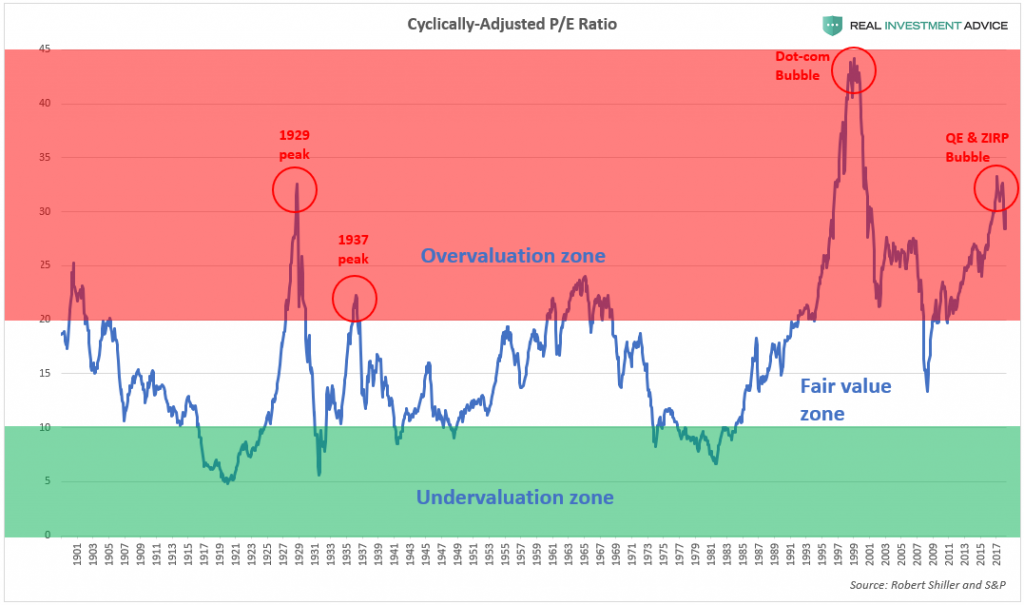
Considering how stretched today’s market already is, Trump’s demand for a 1% rate cut is nonsensical and downright dangerous. As a result of the current stock and bond market bubbles, U.S. household net worth has hit record levels relative to the GDP in recent years, which is a sign that household wealth is overly inflated. The last two times household wealth became so stretched relative to the GDP were during the dot-com bubble and housing bubble, both of which ended in disaster. If Trump got his way, the current household wealth bubble would inflate even further, which would result in an even more powerful crash in the end.
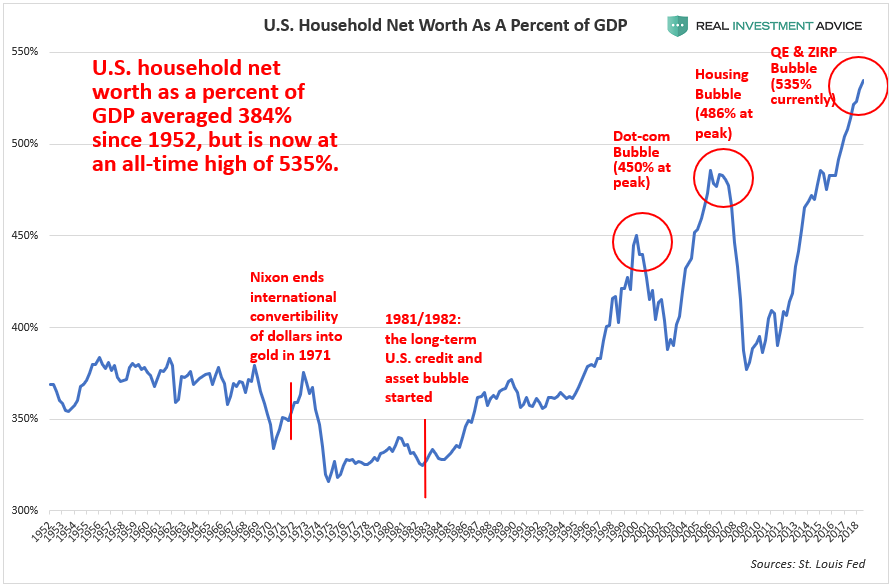
It is extremely irresponsible for President Trump to demand a strong interest rate cut and more quantitative easing at a time when asset prices are already so inflated. It appears that he cares more about having the Fed juice the financial markets to help ensure his 2020 election win rather than the long-term economic health of the country. Although the Fed is supposed to be independent to avoid influence from political leaders, reality is quite different: heavy pressure from Trump during the late-2018 market rout likely contributed to the Fed’s about-face on rate hikes. If there is another market rout or even the slightest sign of economic weakness, President Trump will undoubtedly step up the pressure on the Fed to cut rates. If Trump gets his way, the market may take off like a rocket, but will ultimately experience the mother of all crashes.